Khnang Phsar Region: Relax and Unleash Your Spirit of Adventure

- By Cambodianess
- February 24, 2024 8:00 PM
Khnang Phsar Mountain — When mountains curve like ocean waves and clouds drift below your feet, one feels like being in a tropical paradise untapped by the masses.
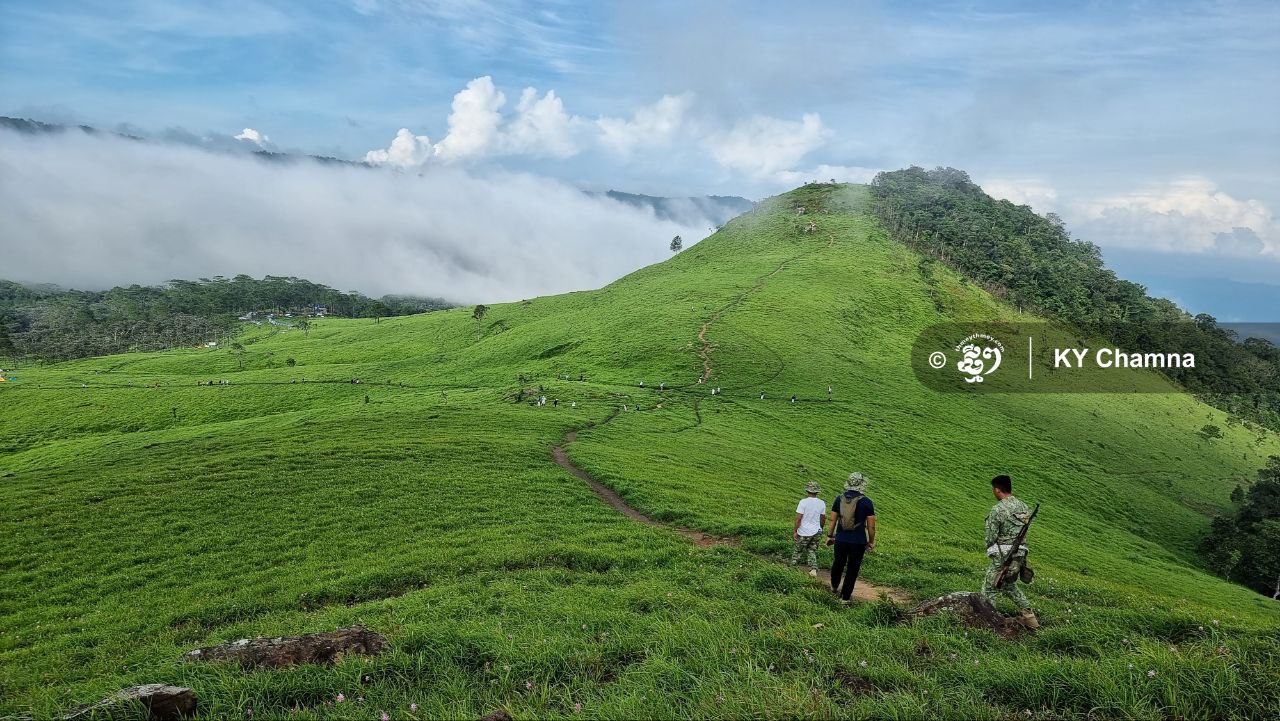
As the evening sun fades away and the constellations start to fill the sky, tents go up in the light of the campfires.
Popularised through social media and by young adventurers over the past years, this tropical paradise, commonly known as Khnang Phsar, has been a location for fit and active people who mean to test their physical strength and to spend time in a green, unaltered natural landscape to escape from the busyness of urban life.
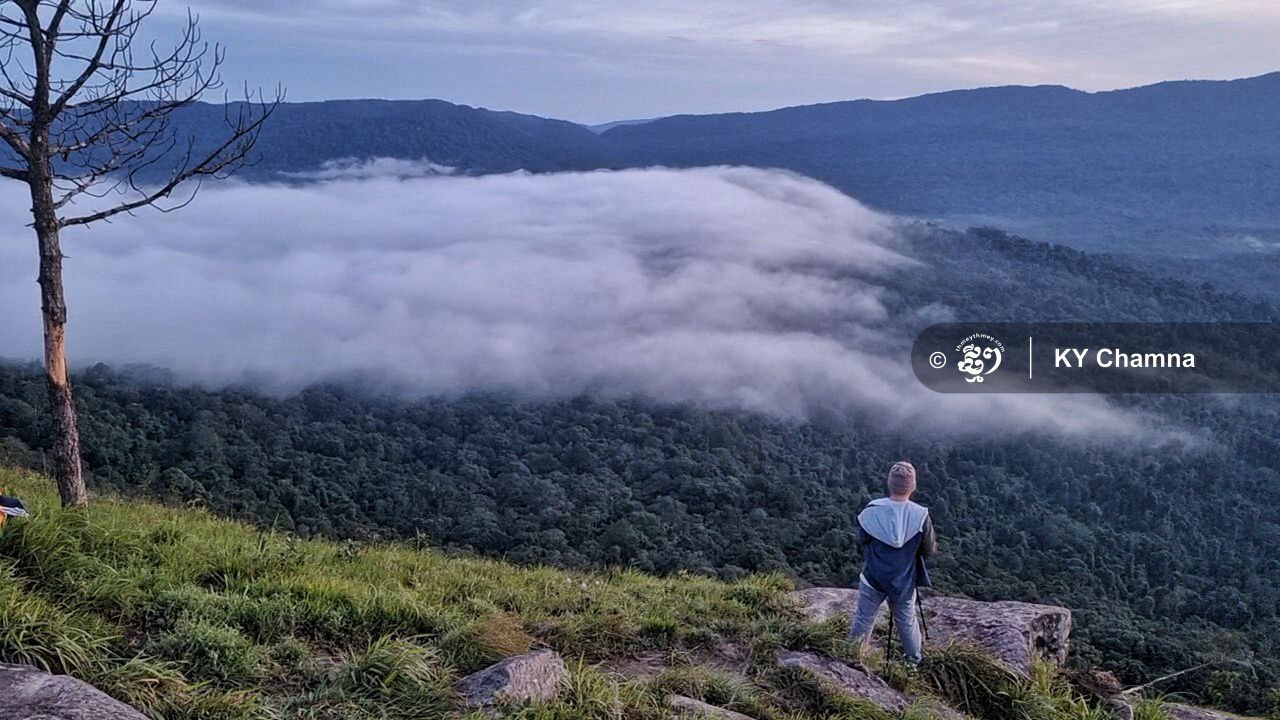
Situated around 160 kilometres from the national roads 4 and 44, Khnang Phsar’s rugged terrain and remoteness can be seen as an ideal location for adventurers to hike for several days almost without internet connection or decent mobile-phone service.
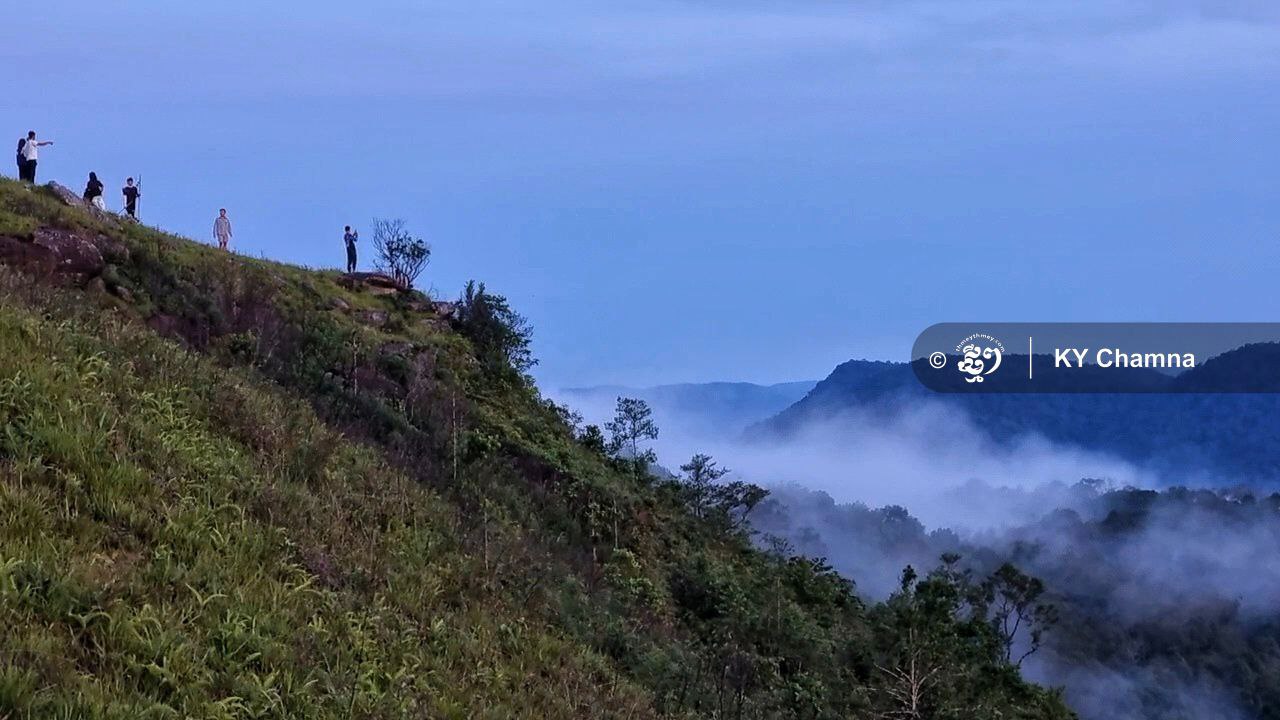
If they leave from Phnom Penh, it may take travellers about one hour in the early morning when travelling along National Road 4 or less than 30 minutes if they use the newly-constructed Phnom Penh-Sihanoukville expressway (with toll fees) before turning on the smaller National Road 44 at Kampong Speu city.
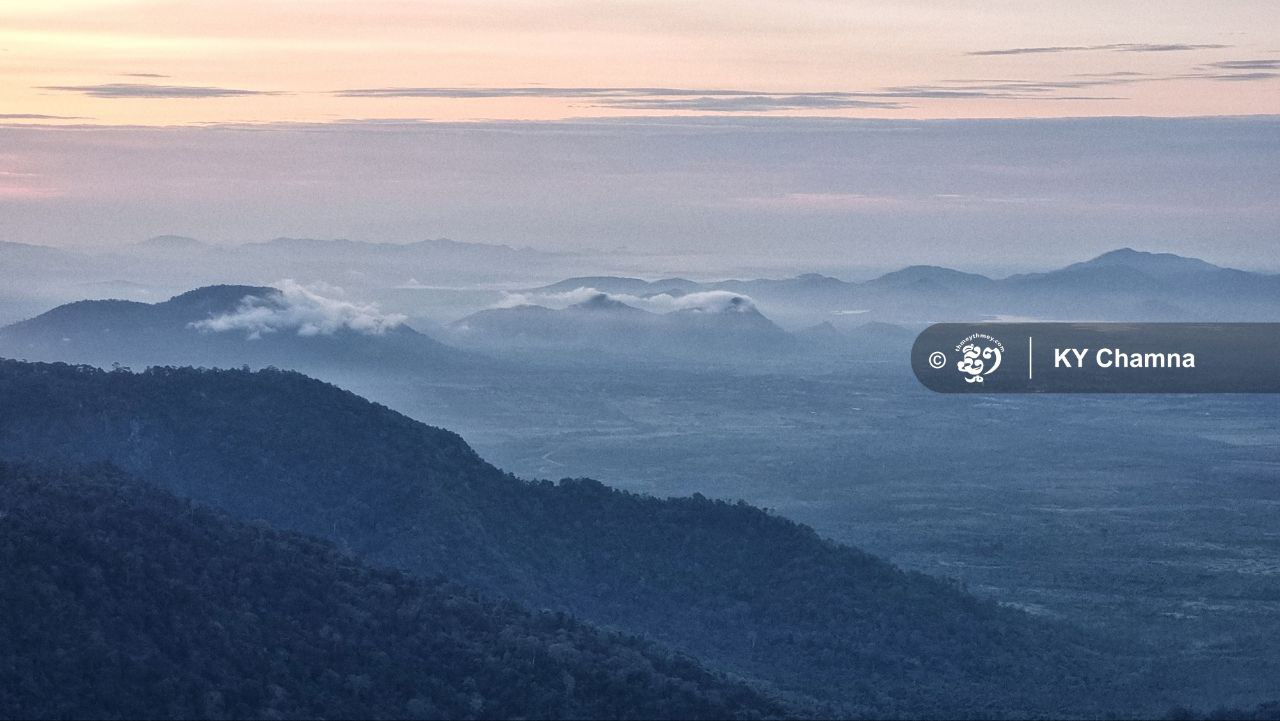
With early departure, travellers have a better chance of hiking up the mountain before heat is at its highest level as, with the humid tropical atmosphere, climbing can be quite energy consuming when the sun is higher in the sky.

National Road 44 cuts across remote villages with the landscape gradually becoming more and more mountainous. Small, modest village houses made of wood and concrete can be seen once in a while along with farmlands and grasslands.
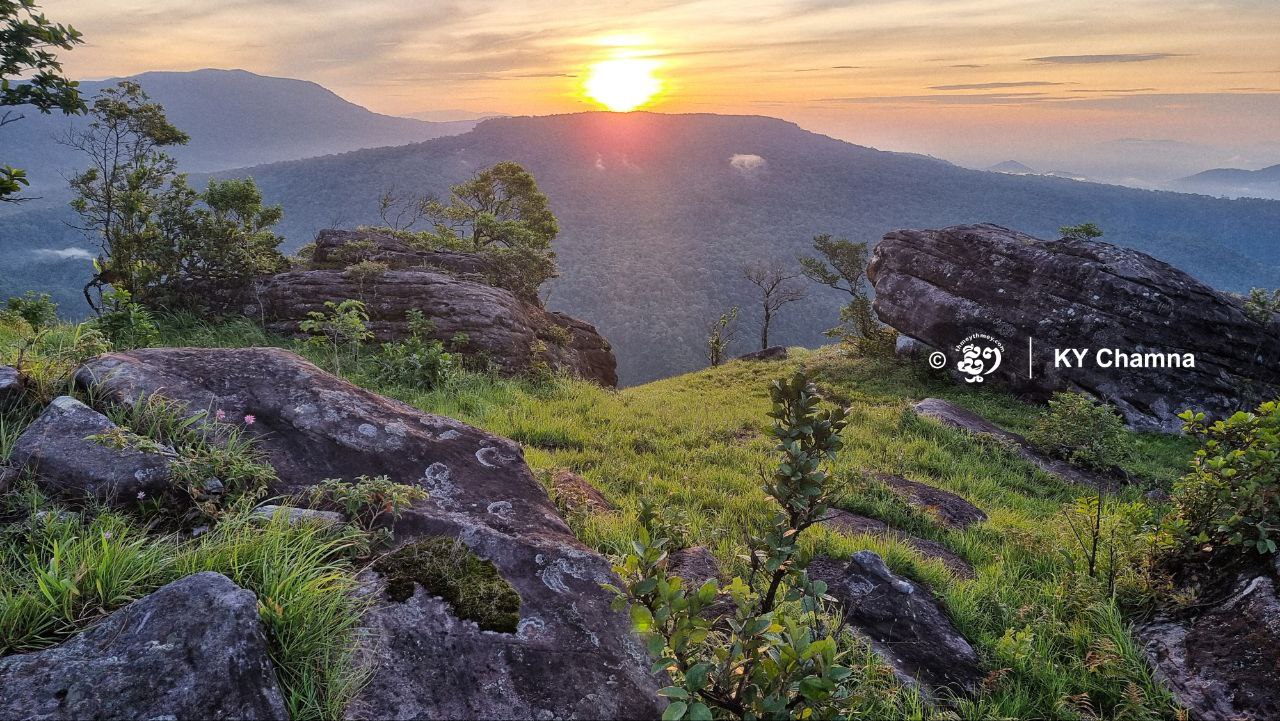
The further away one travels from the provincial city where streets and surrounding roads are paved, the more bumpy and slippery the roads become, especially during the rainy season when muddy becomes the norm.
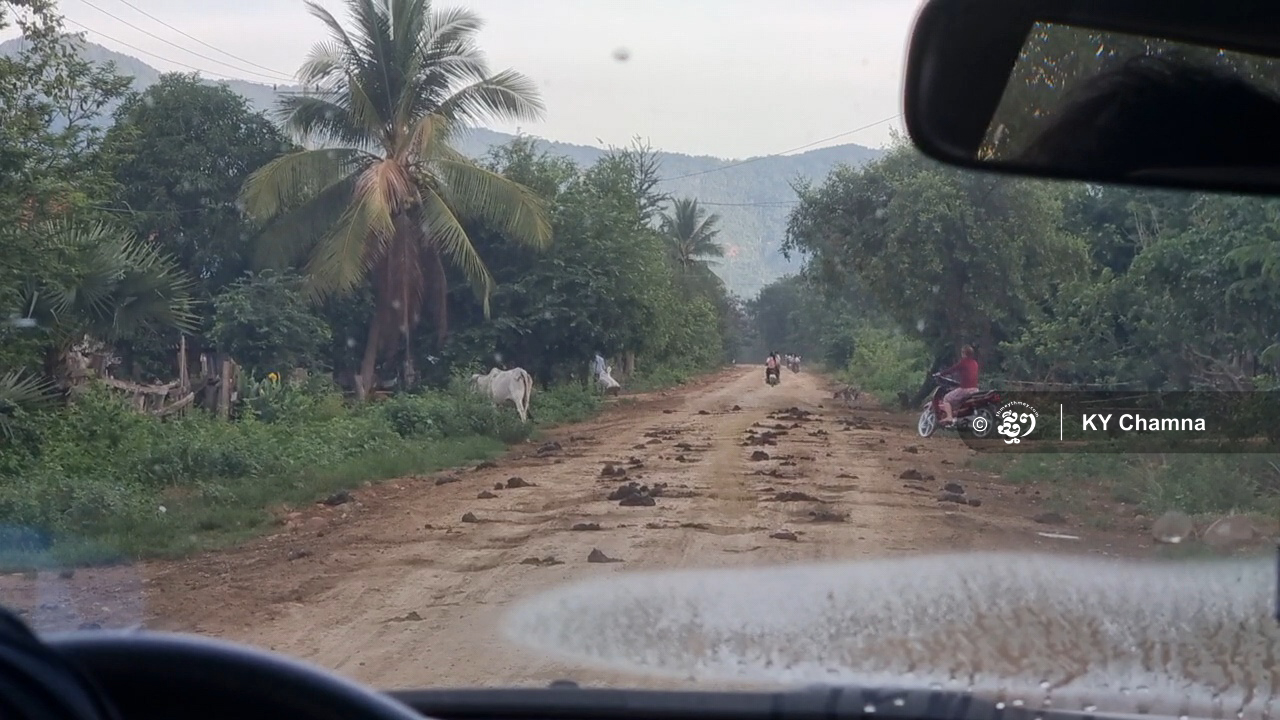
Cattles frequently roam the road guided by herdsmen, leaving the occasional present of dung that ends up littering the path they take.
Before travellers embark on their hike, they have to park their cars or motorcycles, get to the Khnang Phsar tourism community at the foot of the mountain, and they usually have breakfast before leaving.
_1707628570.png)
Caption: Vorn Sot (R), the owner of a community food store.
Villagers in the community are on hand to prepare food for the hikers. As Vorn Sot , one of the villagers, explained, this requires being flexible and ready to prepare what the hikers request. Asked what food she cooks for the travellers, she said, “it depends. Sometimes, the travellers may request us cooking their food of choice. and at other times they just let us introduce what is interesting from our own village.”
Regarding prices, “typical pork rice with fried egg wrapped in banana leaves is about 5,000 riels ($1.25) per wrapping,” Sot said. “For soup, it depends on the prices of the ingredients I buy from the market. It is generally around 40,000 riels ($10) for a pot of chicken soup for example.”

Sot mentioned that, along with selling basic goods to the villagers, her catering service for the hikers has truly helped support her family. “It was tougher for me in the past,” she said. “I used to be a garment factory worker and a seasonal farmer. But now, with more tourists coming, it is easier for me and my husband who drives a power tiller for the travellers. He can manage to get four or five trips per month at $30 per trip.”

The community serves as a checkpoint, and from then on, the road can only be used by highly-specialised off-terrain vehicles such as power tillers with high torque, low gears and traction tyres, and with drivers familiar with it. Pick-up trucks can also use the track during the rainy season but it would be difficult for cars.

A number of men from the village operate power tillers for tourism and logistics purposes apart from farming. Equipped with a manmade wooden platform with stiff suspension, a power tiller provides little comfort although practical and affordable. Able to accommodate around 10 passengers and baggage, power-tiller service, which is optional, can help reduce the travel distance by about 10 kilometres from the community to the entrance point up the mountain peak.
_1707628630.png)
Caption: Seng Soeun (R), a power tiller operation at the Khnang Phsar region.
Seng Soeun, who is a power-tiller driver, also charges $30 for the trip. Driving this vehicle, he said, can be tricky sometimes as it is powerful and can throw one off balance. Switching between the first and second gears—one rarely uses the third gear—the driver has to steer his power tiller along the curvy mountain path filled with potholes and random boulders, Soeun said. All his attention must be focused on the task.

With each stroke of the diesel engine that keeps emitting loud bangs, the passengers sitting behind laughed at having to inhale the thick black soot as the tiller climbed up, and this, amidst this green, peaceful landscape.
When the vehicle lost momentum and traction disappeared, the passengers hopped off in a group to push the power tiller forward, and then shout a loud, excited “yay!” as the tyres gain grip.

At the next stop, it was time for people to turn hikers, test their mountain gears, and get ready for the physical and also mental challenge. Due to its remoteness and lack of food service from then on, canned food, energy drinks and instant noodles plus instant coffee wrapped in small packages, which local people sell, are popular items among hikers.
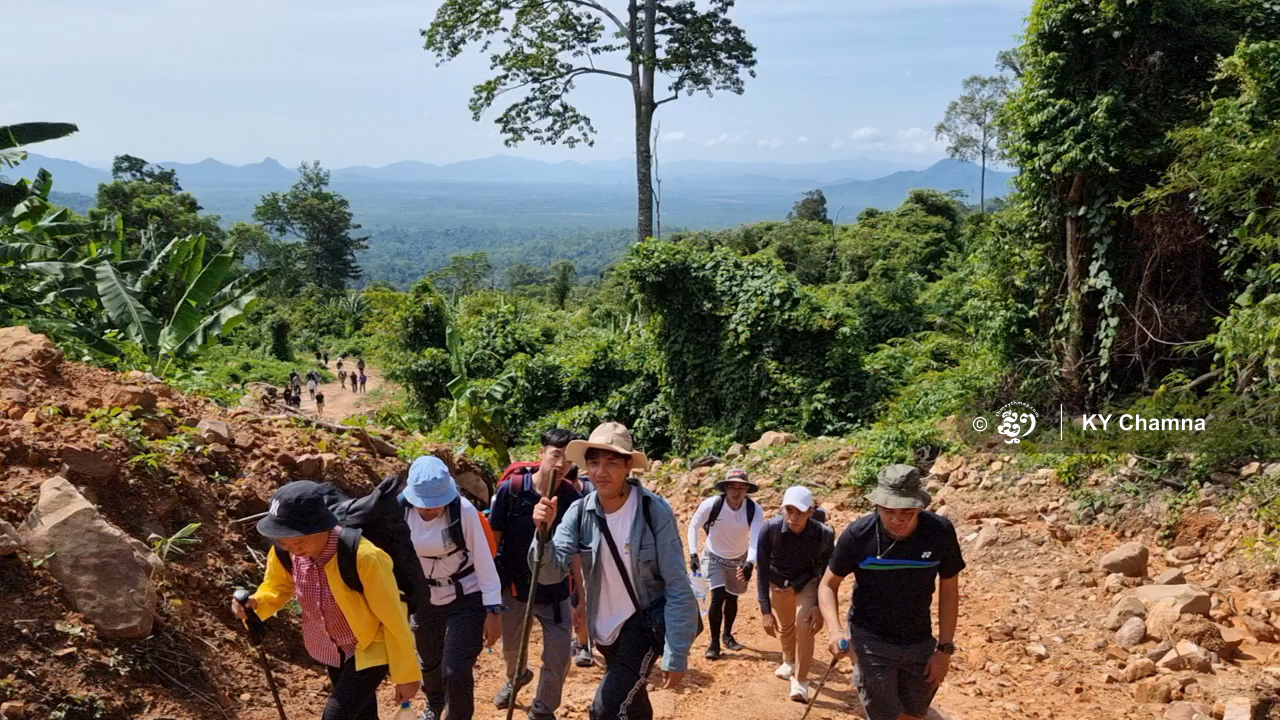
Reaching the camping site may take several hours depending on the number of times the hikers stop to rest.
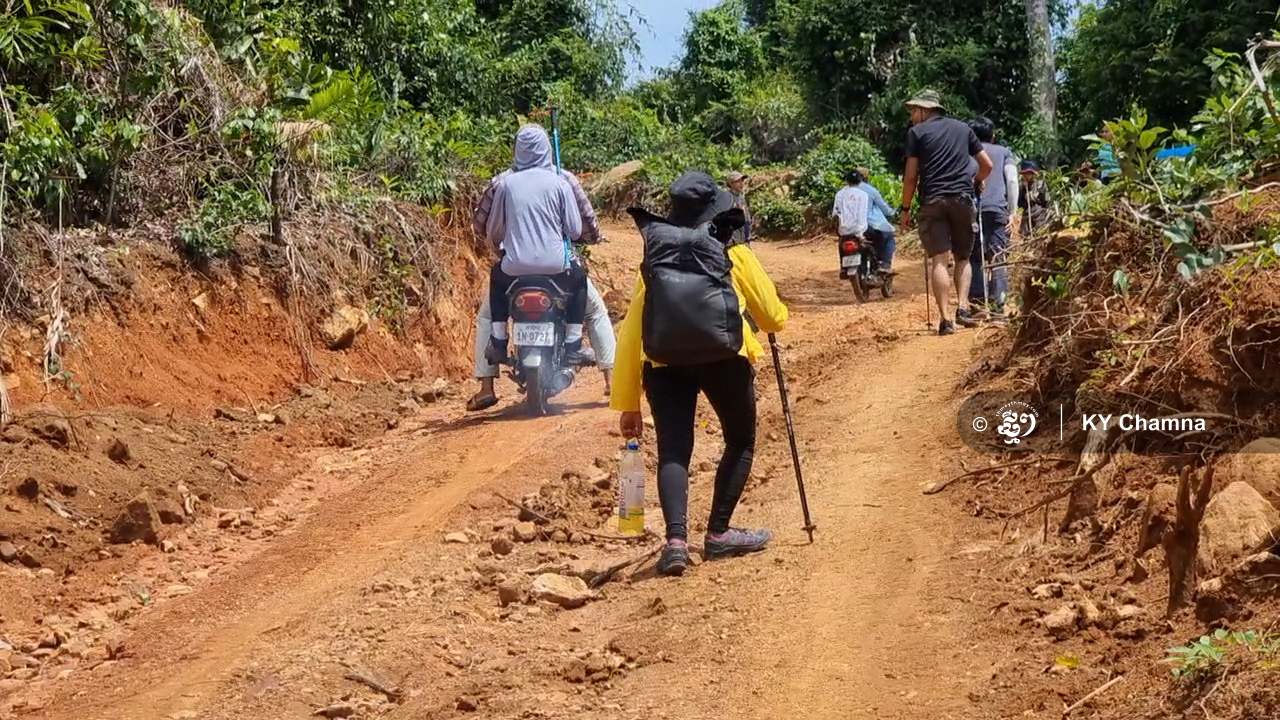
While the majority of the people carry their belongings on their backs, local people also offer transportation service on foot and on small 110cc semi-automatic motorcycles.
_1707628673.png)
Caption: Chey Chin (R), a local guide at the Khnang Phsar region.
In contrast with the travellers from cities who are wearing specialised gear and outfits, local people such as Chey Chin, who was carrying heavy loads and chickens on his back, simply wore a regular t-shirt, shorts and a pair of flip-flops.
As he explained, he is used to going up the mountain with the hikers’ heavy loads as he has been offering this service for three years. “The way it works is that my services may cost 80,000 riels per day (about $20.00),” Chin said. “However, if the tourists want us to also be there through the night, we have to charge double or technically for two days. Per month, I might have two trips.”
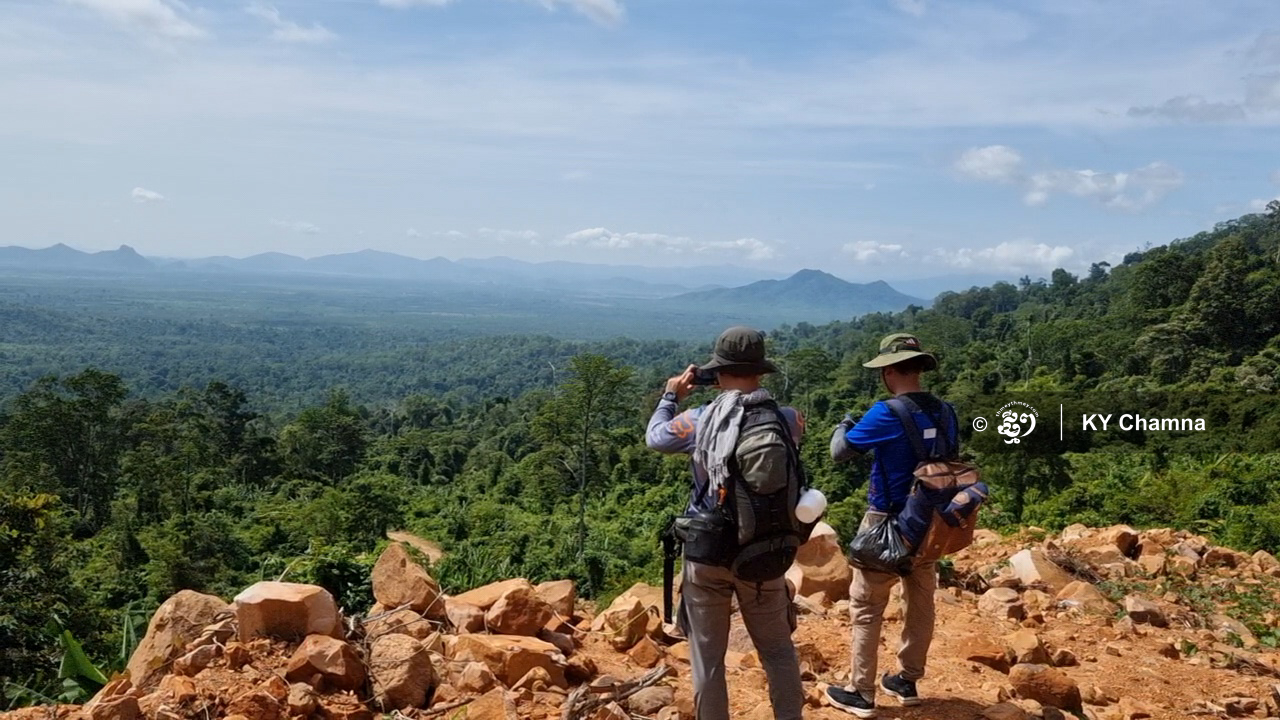
Asked whether this work was physically taxing, Chin said that it was. “But over time it becomes normal,” he said. “Well, you have to carry as tight as possible while distributing the weight around your body. Since it is my job, I normally carry around 15 kilograms.”

Caption: A truck is carrying construction materials to the top.
Conserving drinking water can be tricky as supplies can be limited due to logistical difficulties. Hikers may have to drink as little as possible while making sure not to get dehydrated throughout the trip.
As the elevation increased, the breeze got cooler and fern trees appeared more often. After going through areas with canopies and tall grasses, the scenery suddenly opened on an enormous, lush field in the region surrounding the peak of the mountain.
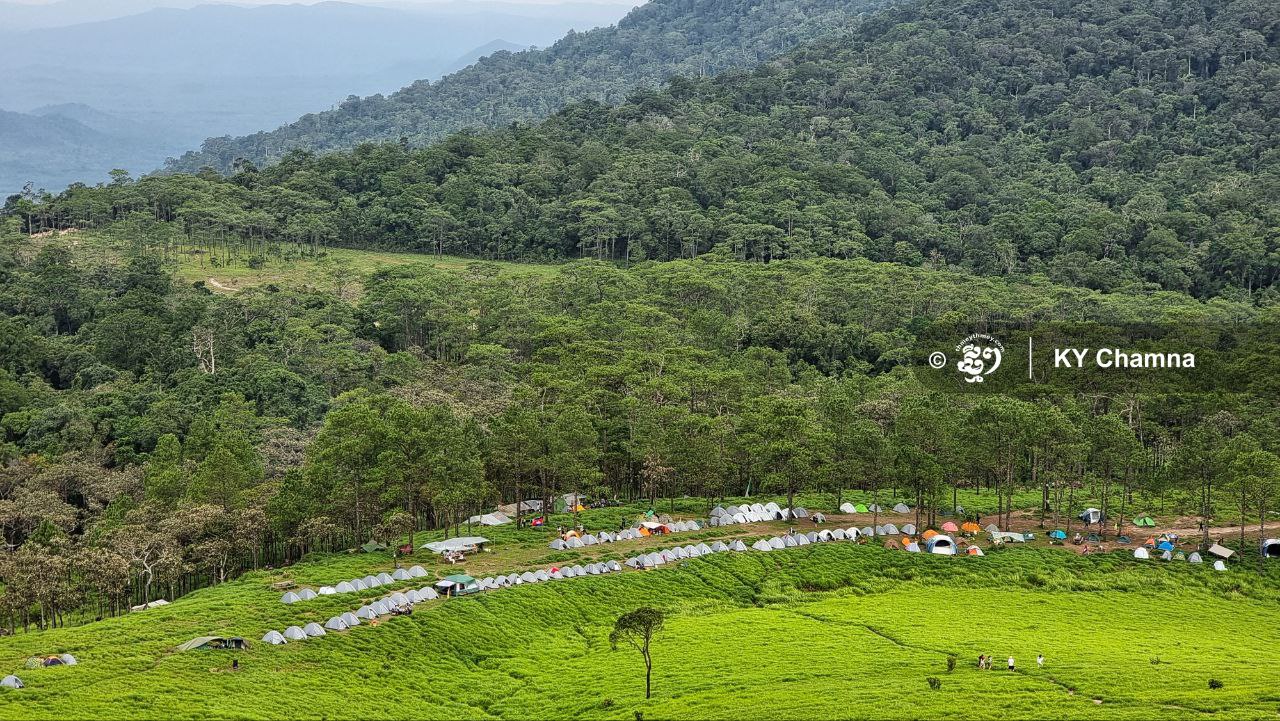
Tents, generally suitable for one or two people, had been pre-installed in rows by the community members and equipped with electric lights powered by portable power banks or vehicle batteries: a small tourist community in the middle of a green world.
With more or less a whole afternoon to spare before dinner, travellers took the opportunity to roam around the immediate vicinity, taking photos, showering or preparing food.
_1707628857.png)
Caption: Hun Many (L), a former member of parliament representing the province of Kampong Speu.
Hun Many — a member of parliament representing the province of Kampong Speu who, since this interview in July 2023, has been appointed Civil Service minister—described Khnang Phsar as a great location to challenge oneself in the outdoors and this, at a relatively short distance from Phnom Penh.
This mountainous region of Khnang Phsar is a site that can appeal to Cambodians and foreigners living in the country as well as visitors, he said during the interview, adding that he hopes to see more expats, people from the diplomatic corps as well as the diasporas living in Cambodia seeking information on Khnang Phsar or actually going to the mountain.
Many was also asked whether there were plans for the provincial road connecting National Road 4 to the region of Khnang Phsar, which could do with some improvements, and if there were plans, would this be done in a way to maintain the natural setting of the area that attracts visitors.
“We need to take into consideration the pace of development and where development is connected to and from,” he said. “Improvement will happen, but it will take a certain amount of time. Nevertheless, the development will stop at some point, for example at the foot of the mountain, so that adventurers can still face challenges when climbing to the camping site.”
_1707628898.png)
Caption: Keiy Sochetra (R), a ranger at the Khnang Phsar region.
Among the people sitting in the light drizzle by the campfire, waiting for the hot chicken soup to arrive at dinner time, was Keiy Sochetra, a ranger who had been working in the Khnang Phsar region since 2017.
Truly caring for nature and wildlife, Sochetra said how glad he felt that illegal hunting had decreased due in part to the increasing number of tourists. “During my patrol throughout this region, I spotted many large animals such as gaurs, bantengs and deers,” he said. “It is not really easy to spot them ‘face-to-face’ in real-life. Most of the time, I can only see traces of their presence such as their footprints.”
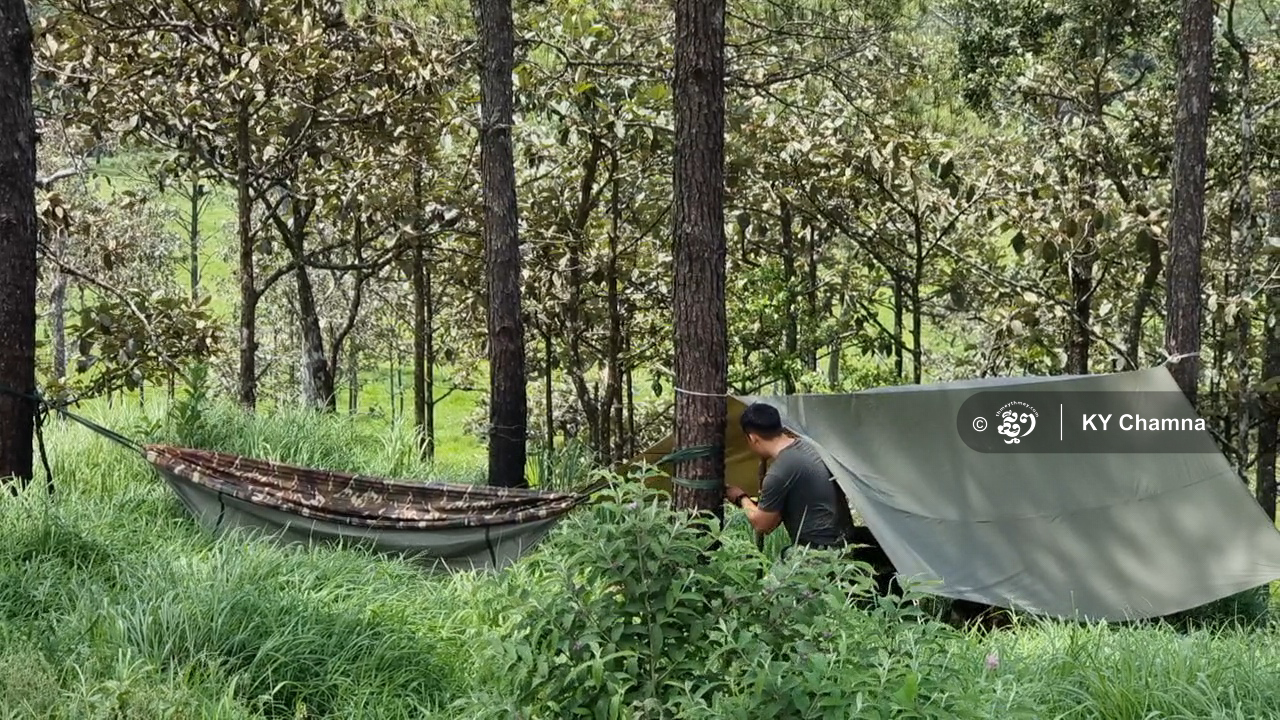
When it comes to illegal hunting, Sochetra said, “people from outside the village are the ones who usually do it. During our patrol in the jungle and when we find their hunting traps, we usually remove and destroy that equipment. We mainly patrol during the day and sometimes at night depending on duty calls. Traversing the jungle on foot is more effective to get closer to the animals since noisy transportation such as motorcycles can scare them away.”
Regarding poaching, he said, “based on what I can see, when more tourists come here, it creates jobs for the locals. So, it decreases the activity of wildlife hunting and deforestation.”
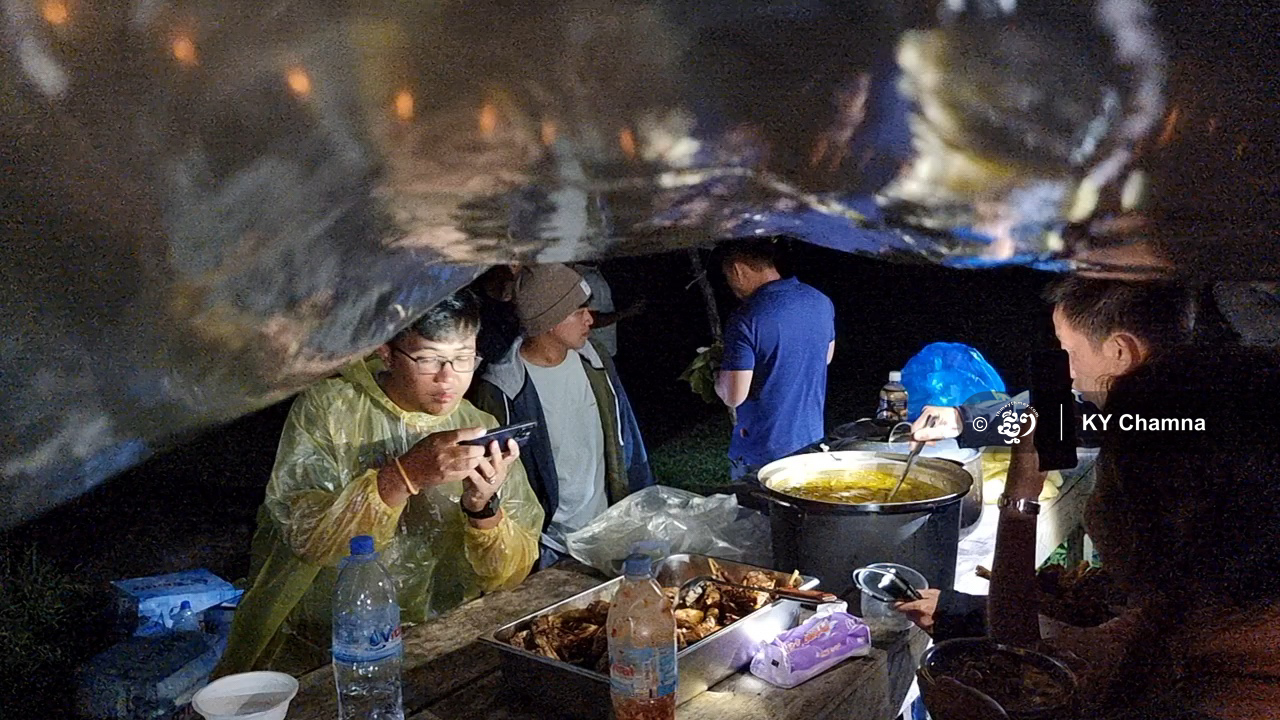
As the sunset loomed behind the hill and the wind started to slowly pick up, sometimes in combination with light rain, campfires were made by a group of travellers close to their resting areas. People drank beers, soft drinks and coffee as they kept talking into the night, with some of them playing musical instruments. Others just laid on the grass, contemplating the far-flung constellations in the clear dark sky accompanied by the singing of insects and the cracking of tree branches and leaves.
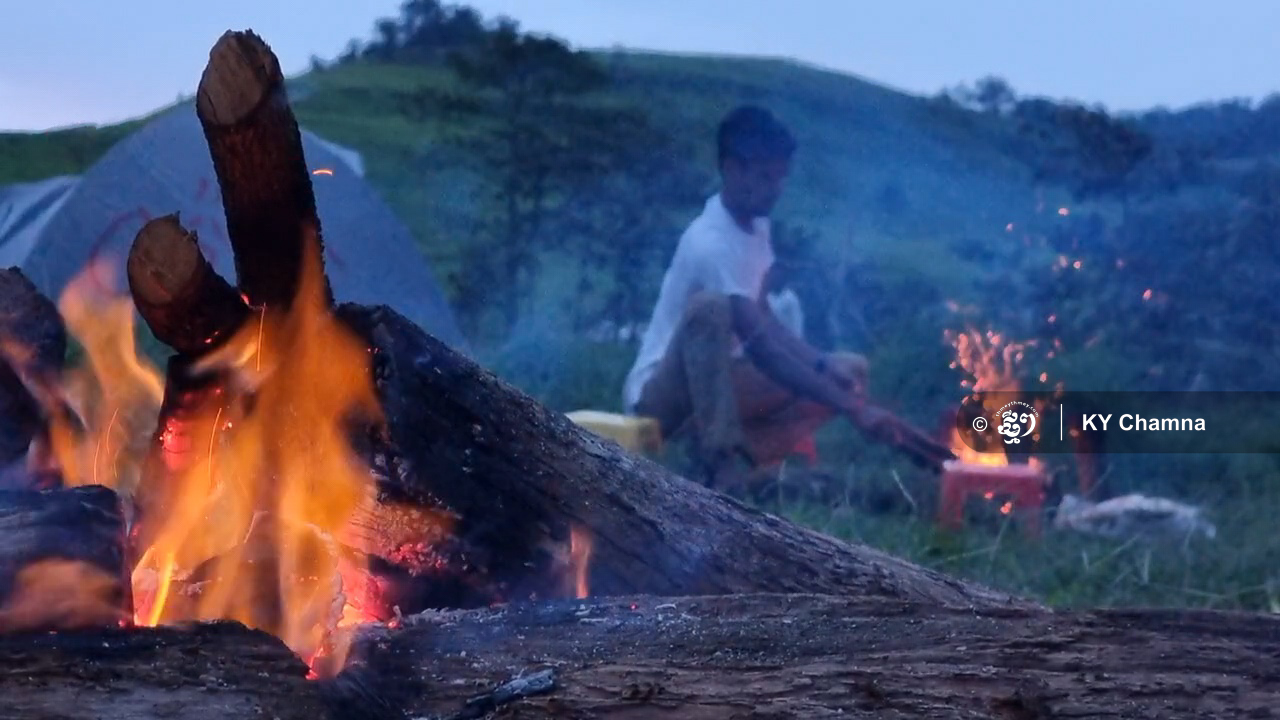
Even though this is a remote area, the community administration has paid attention to the need for hygiene for people after a long day of hiking and sweating. There was a wooden toilet-and-shower compound with cold water provided from a nearby creek.
_1707628965.png)
Caption: Chea Yuthea (R), vice-president of the Phnom Kravanh National Park office.
According to Chea Yuthea, vice-president of the Phnom Kravanh National Park office, this amenity at Khnang Phsar has been in place for several years. “Constructed at the end of 2021, the compound has 10 restrooms, which can function normally as shower rooms,” he said. “The water is pumped from a creek below and stored using huge tanks above. Our goal is to improve the hygiene of our camping site as well as provide more comfort for our campers, and especially ladies.”
Asked whether he felt that 10 restrooms were enough today to meet the needs of the camping site, Yuthea said, “[w]ell, it is not really enough yet. During peak season, as many as 1,000 campers made their way here each week. Plus, there are also a couple more camping spots away from here. So, we need to build more restroom compounds in the future.”
Today, the restroom facility can be used for free. Does the national park office intend to eventually charge people a small fee as a way to cover the price of improvements to the facility? “It has not been decided at this point,” Yuthea said. “However, campers can offer some payment out of their generosity. In the future, the facility might require campers to drop off 1,000 riels ($0.25) per use. This green and natural environment depends on the efforts of our campers to keep it clean and healthy for other visitors.”
Around midnight, after travellers had finally run out of stamina, calm descended on the camp except for a handful of people who got up to use the restroom.
Depending on the duration of one’s stay, a long night sleep may not be possible as visitors must get up early to start their day of hiking to another nearby peak with a far better view toward the mountain range.
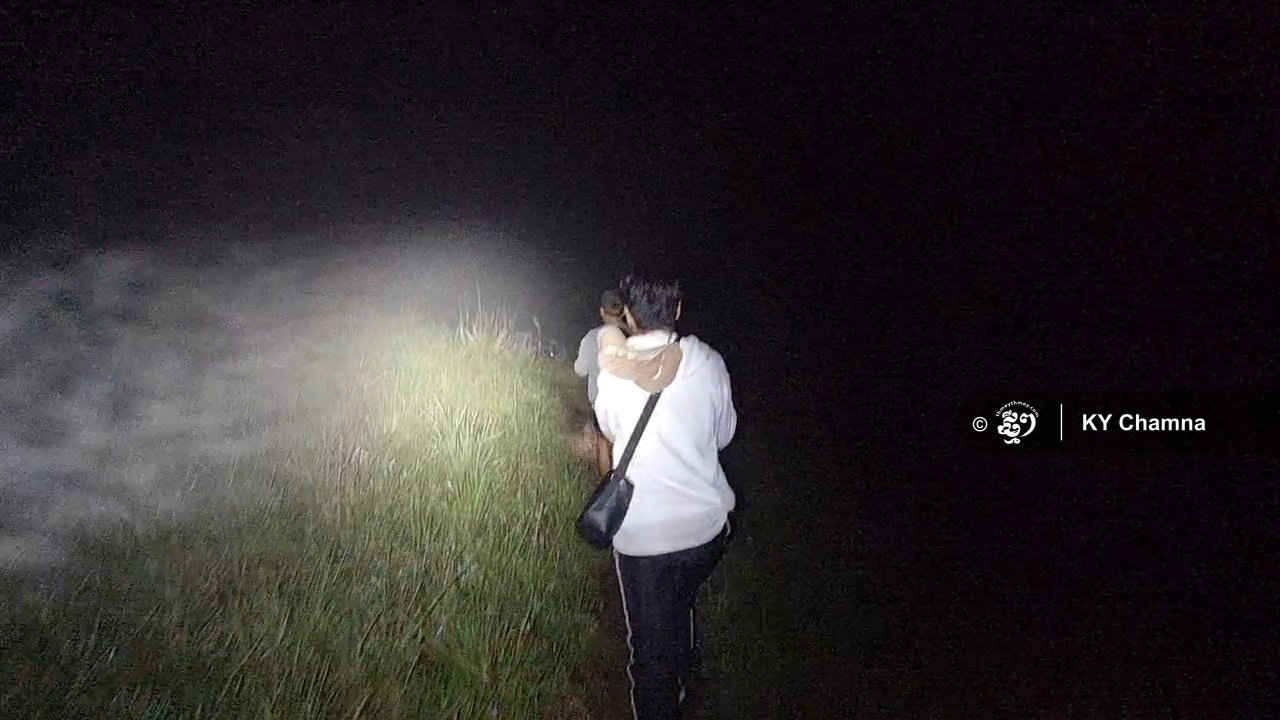
Four o’clock in the morning would be a good time to start as it takes around one hour of walking through the pitch-dark mountain passes with highly uneven terrain, steep drops and a tangled mess of tree branches.
Mist and clouds reduced visibility, and so small electric torches helped light up the way. Walking in line, travellers at the front would occasionally warn those behind about the obstacles ahead such as rocks, boulders or slippery areas.
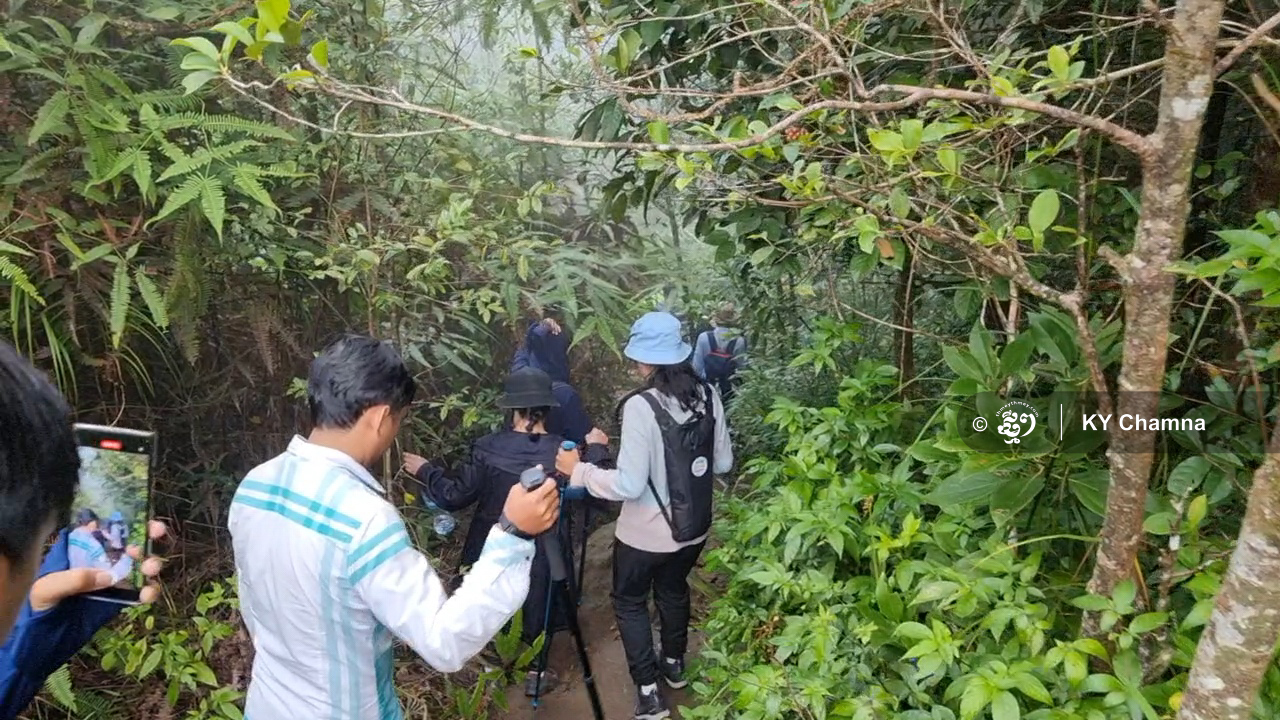
After an hour or so of hiking, depending on the time of the year, travellers may arrive just before sunrise so they can watch it far away over the horizon.
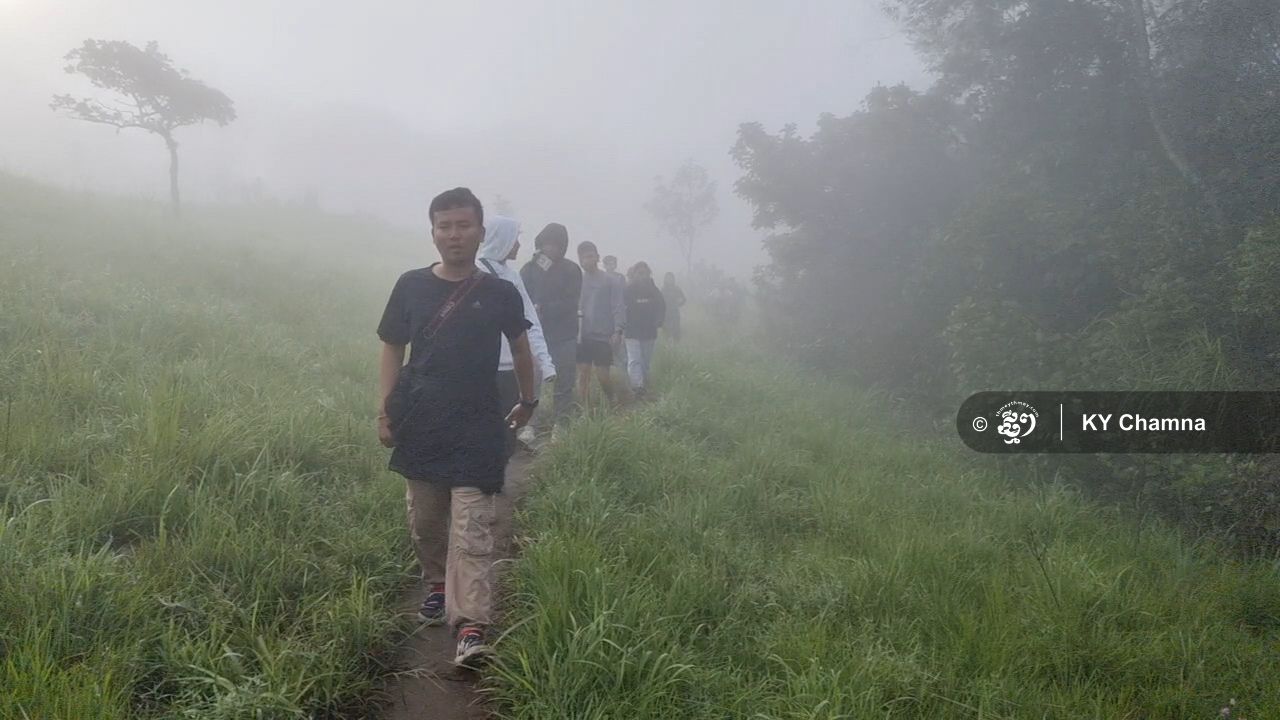
Mobile phones remained hidden away deep in one’s pocket as contemplating the landscape had become a healing force for the mind. Solo travellers found spots for themselves behind rocks or small trees, sitting or meditating quietly along with the gently moving clouds. Campers who had come in groups with their specialised cameras and drones took the opportunity of taking photos for memories or for their vlogs on social media.
_1707629001.png)
Caption: Khon Leang Eng, a young mountaineer and vlogger. Photo provided.
Among them was Khon Leang Eng, a young mountaineer and vlogger who had crossed the Khnang Phsar region 30 times over the last four years. “My first trip was a bit of a challenge since I was not physically trained enough,” she said. “During the following trips, I gave myself different challenges such as going solo, going at night, setting my climbing time to only two hours or bringing my bicycle by the camping site. The scenery of Khnang Phsar is always beautiful with its golden grassland during the dry season, and its lush green landscape and highly humid air during the rainy season.”
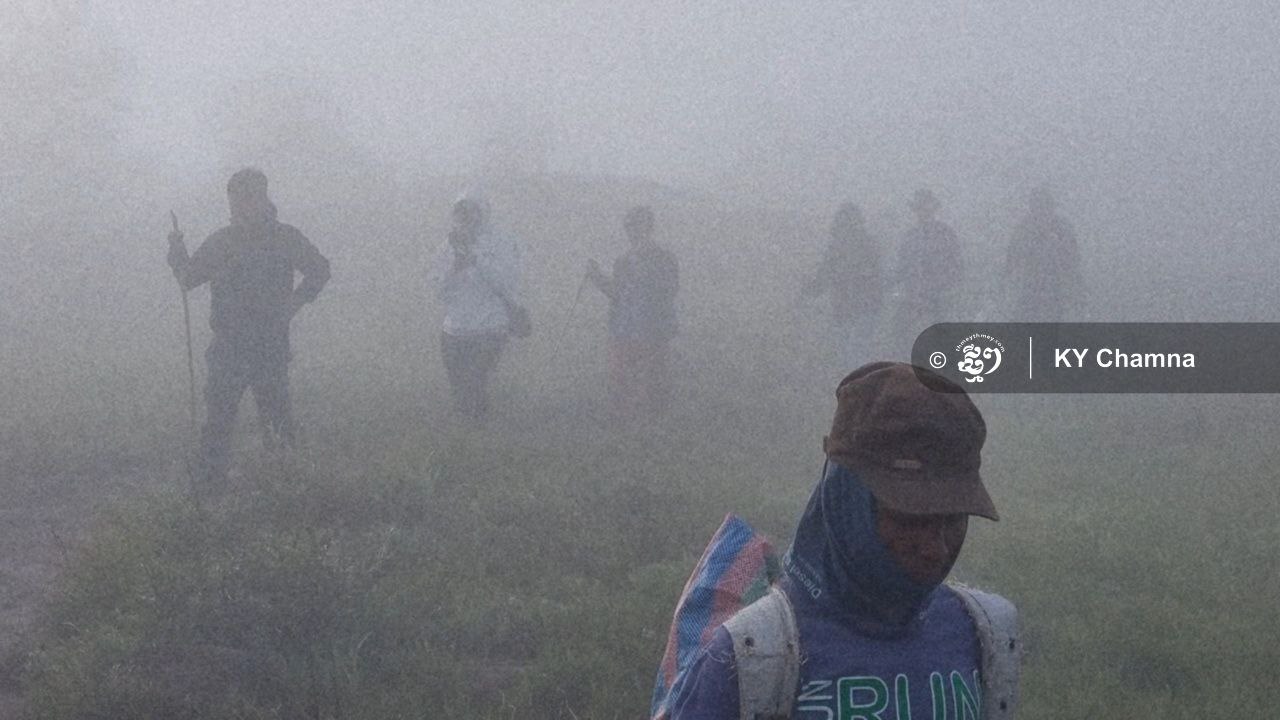
There, the temperature goes down and the wind picks up. An ocean of clouds flows so fast that you would not really need to set a timelapse on your camera to know that they are moving. Some travellers bring their own small portable gas stoves to boil water for their instant noodles and coffee while they enjoy the scenery from above the clouds. As the sky becomes increasingly brighter, more and more groups arrive. Plus the villagers’ dogs that also make their way up the peak once in a while.

The journey back to the tourism community was more or less the same. Although going down is usually easier as this requires less energy. Riding the power tiller was still a bumpy experience while being welcomed back from the adventure by the smiling villagers gave one a sense of success.
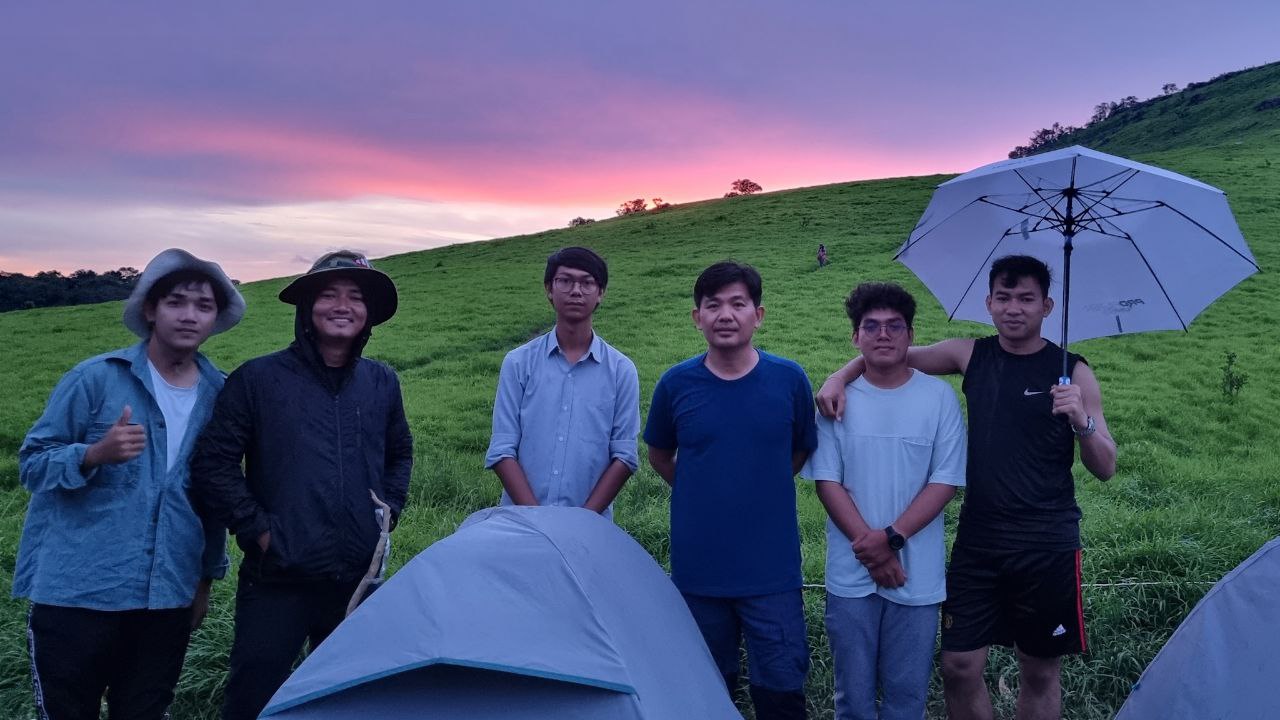
This story is based on interviews conducted by Heng Sreylin, Ky Chamna, Sem Vanna and Zul Rorvy in July 2023.
Conducted in Khmer language for ThmeyThmey News, the story was translated by Ky Chamna and Luy Sireyreaksa for Cambodianess News.
Watch Cambodianess News vlogs on Khnang Phsar:
Khnang Phsar: A Hidden Natural Treasure (Part 1)
Khnang Phsar: Catching Clouds (Part 2)















